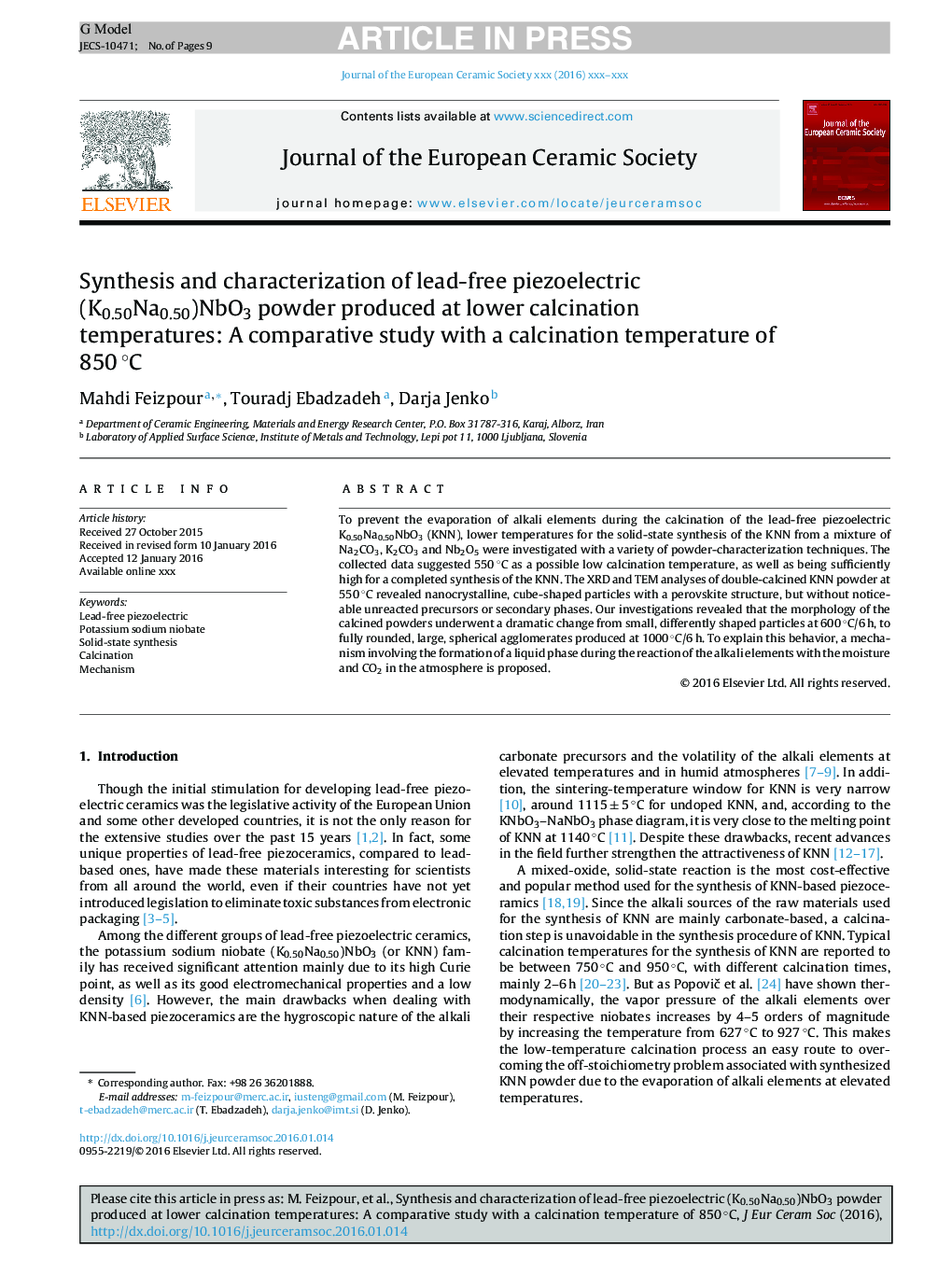| Article ID | Journal | Published Year | Pages | File Type |
|---|---|---|---|---|
| 10629279 | Journal of the European Ceramic Society | 2016 | 9 Pages |
Abstract
To prevent the evaporation of alkali elements during the calcination of the lead-free piezoelectric K0.50Na0.50NbO3 (KNN), lower temperatures for the solid-state synthesis of the KNN from a mixture of Na2CO3, K2CO3 and Nb2O5 were investigated with a variety of powder-characterization techniques. The collected data suggested 550 °C as a possible low calcination temperature, as well as being sufficiently high for a completed synthesis of the KNN. The XRD and TEM analyses of double-calcined KNN powder at 550 °C revealed nanocrystalline, cube-shaped particles with a perovskite structure, but without noticeable unreacted precursors or secondary phases. Our investigations revealed that the morphology of the calcined powders underwent a dramatic change from small, differently shaped particles at 600 °C/6 h, to fully rounded, large, spherical agglomerates produced at 1000 °C/6 h. To explain this behavior, a mechanism involving the formation of a liquid phase during the reaction of the alkali elements with the moisture and CO2 in the atmosphere is proposed.
Related Topics
Physical Sciences and Engineering
Materials Science
Ceramics and Composites
Authors
Mahdi Feizpour, Touradj Ebadzadeh, Darja Jenko,
